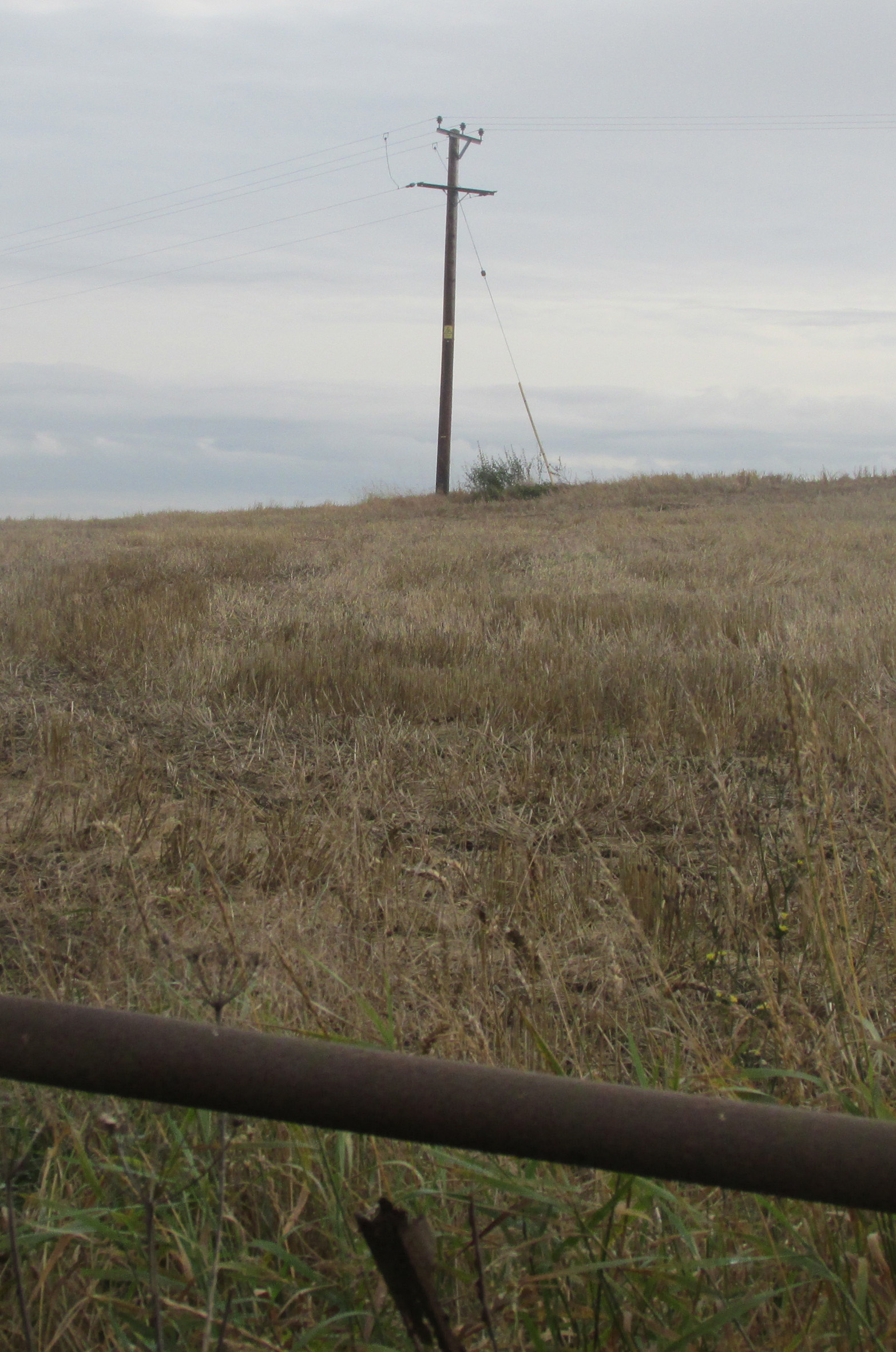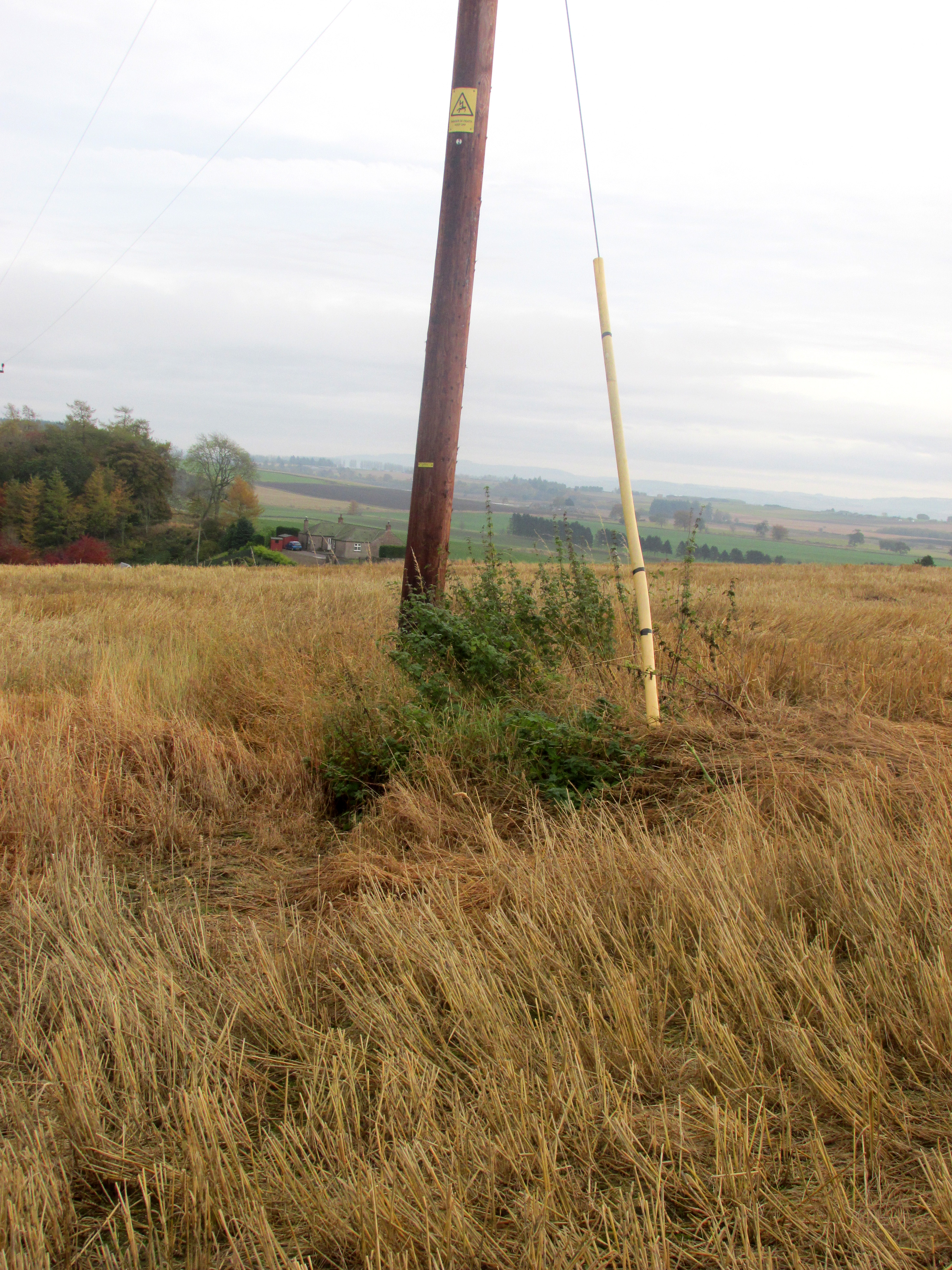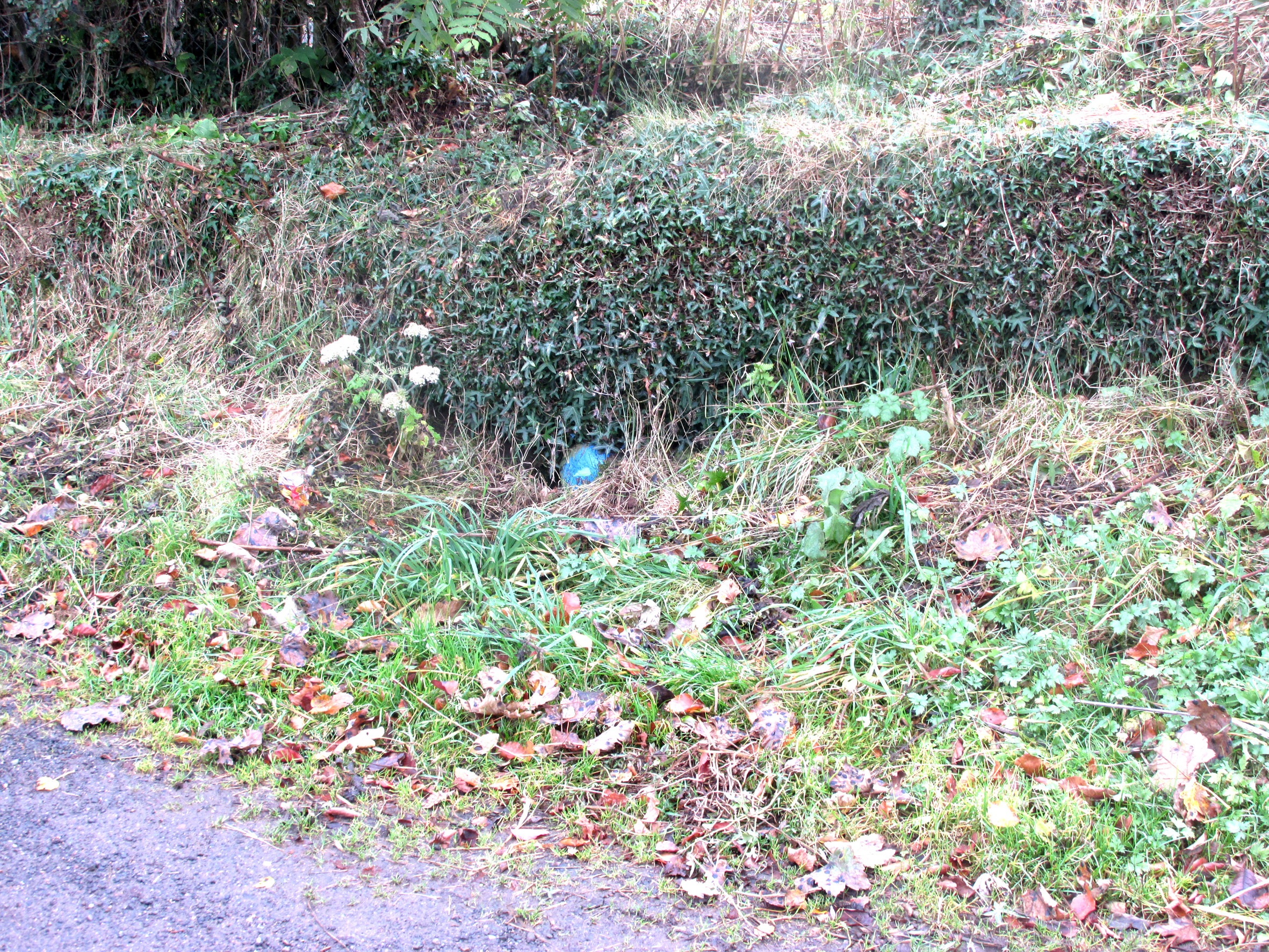Stone Circle: OS Grid Reference – NO 3530 5620
Also Known as:
From Kirriemuir central, head up the Kinnordy road, going straight across the main road and continuing past the Kinnordy turn-off for just over a mile towards Mearns, stopping where a small copse of trees appears on your left. From here, walk along the track to the west. It goes gradually uphill, cutting through a small cleft with a hillfort on the north and a cairn circle on the south until, ⅔-mile along, you reach the moorland. Keep going on the same path for another ½-mile west where the grasslands level out. Here, on the flat bit between the two hills, a small incomplete ring of stones lives, with one stone sticking out. You’ll find it!
Archaeology & History
This is a curious site on several levels—not least, that its definition as a ‘stone circle’ is a fragile one; although to be honest, we do find here a large unfinished arc of stones in what looks like either an unfinished ring, or a deliberately constructed large arc. But you won’t find it in the standard megalithic gazetteers of Burl, Barnatt or Thom as it was only relocated in the 1980s by local researchers Sherriff and MacKnight. (1985) They didn’t have much to say about it either, simply telling that they’d found,
“A stone setting representing the remains of either a denuded cairn or a stone circle lies in the saddle between Culhawk Hill and Castle Hill. One erect and 4 prone boulders describe a portion of a roughly circular site some 10m in diameter.”
This is roughly the gist of it, with the largest and most prominent of the stones—barely three feet tall—standing on the western side (this is the stone which draws your attention – otherwise you’d never even notice it). The rest of the stones seem to have been knocked down some time ago. A barely discernible embankment constructed around the edge of the ring can be seen around the northern side. It seems unlikely that it was a cairn, as no inner piles of stones were in evidence when we visited the site. It may be a large hut circle. But in truth it could do with an excavation so that we can suss out its exact nature. Beneath the grasses we found an additional stone to those counted by Sherriff & MacKnight; but more intriguing is what Frank Mercer and I found before we even reached the small circle….
More visibly distinct than the ring itself were two artificial raised embankments, running parallel with each other 3-4 yards apart. The raised edges of these embankments were about a yard across, on both sides, with the inner area slightly lower than the outlying natural background. These distinct linear earthworks are, quite simply, an early medieval or prehistoric trackway—and it leads directly into the circle! It’s quite unmistakable and is clearly visible as it drops down the slope to the south and away into the fields below. Sadly when we found it last week, darkness was falling and so we didn’t trace the trackway any further. But the most notable thing was that it stopped at the circle and did not continue on its northern side, implying that it was constructed with the circle as its deliberate focal point. The trackway and its embankments are roughly the same size as other recognized prehistoric routes, such as Elkington’s Track on Ilkley Moor and the other ancient causeway that runs past the prehistoric ring known as Roms Law.
Regarding the ring of stones: unless you’re a real megalith fanatic, you’ll probably be disappointed by what you see here. It’s a bittova long wander to something that may once have been just a hut circle, but the avenue leading up to it is something else – and much more intriguing!
References:
- Sherriff, John R. & MacKnight, O., “Culhawk Hill (Kirriemuir p): Stone Setting,” in Discovery & Excavation Scotland, 1985.
Acknowledgements: Thanks as always to Nina Harris and Frank Mercer; and to Paul Hornby for use of his photos.
© Paul Bennett, The Northern Antiquarian






